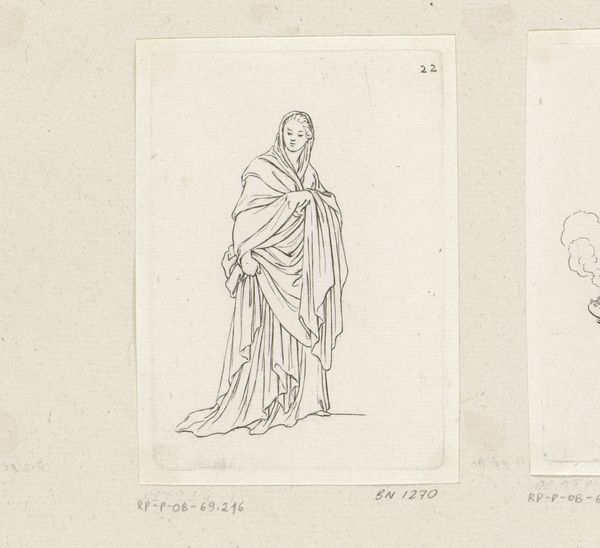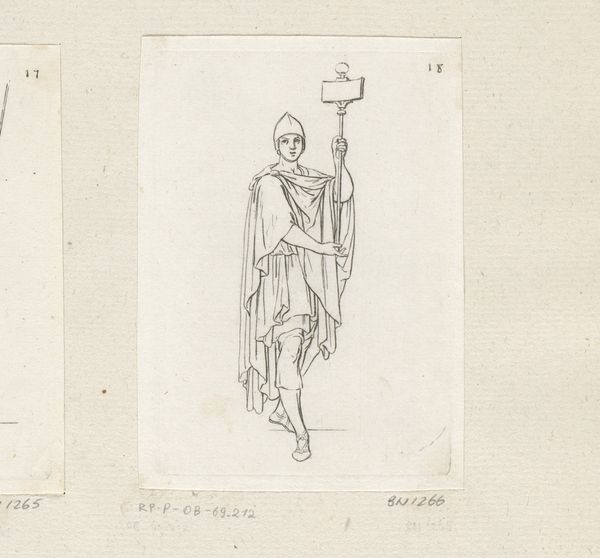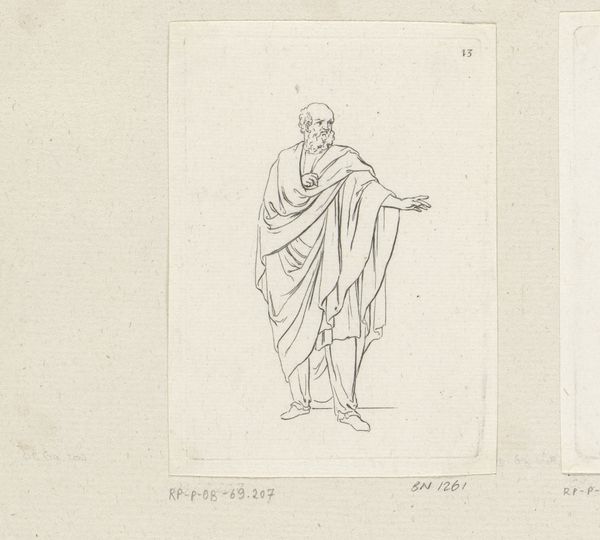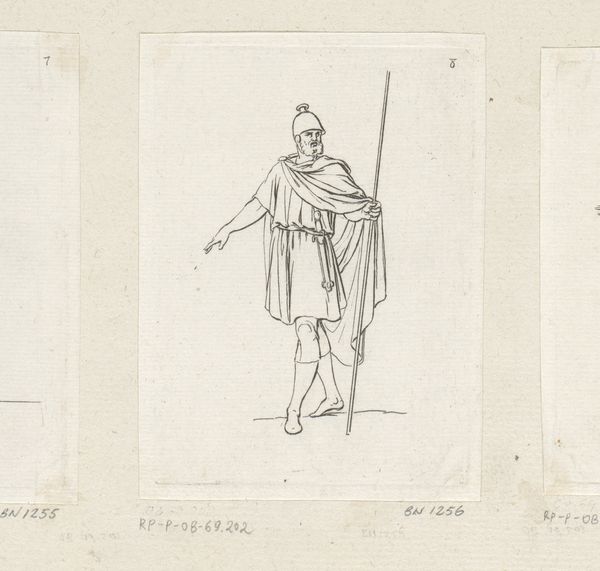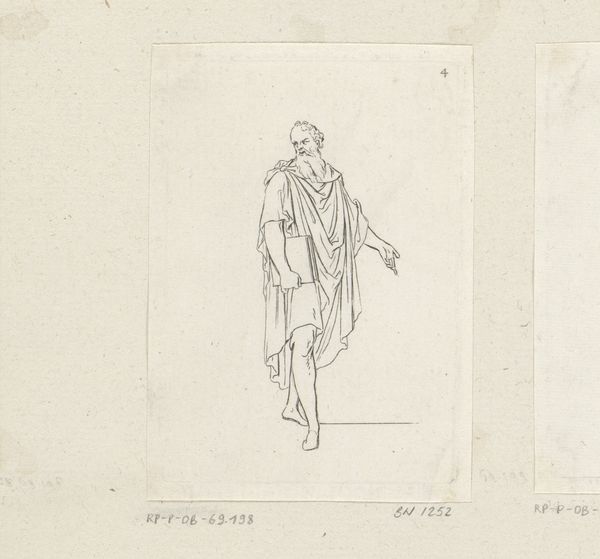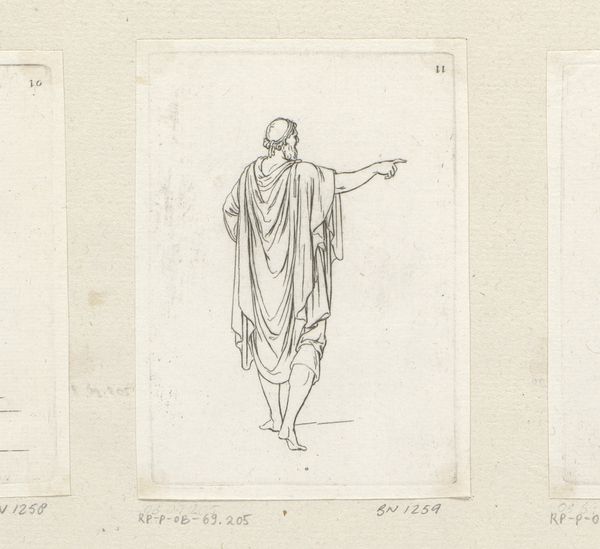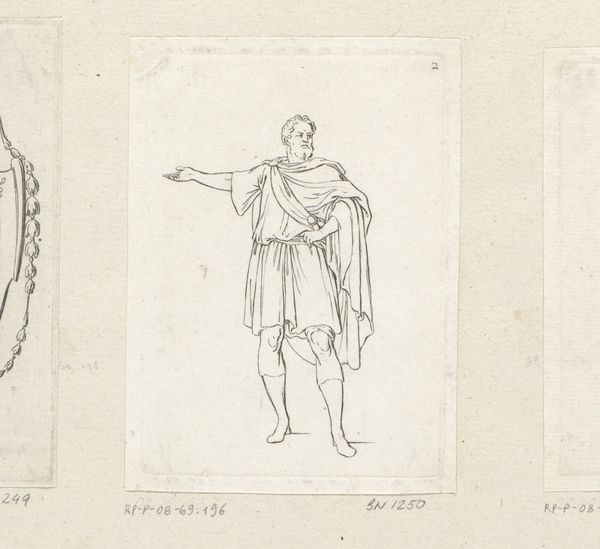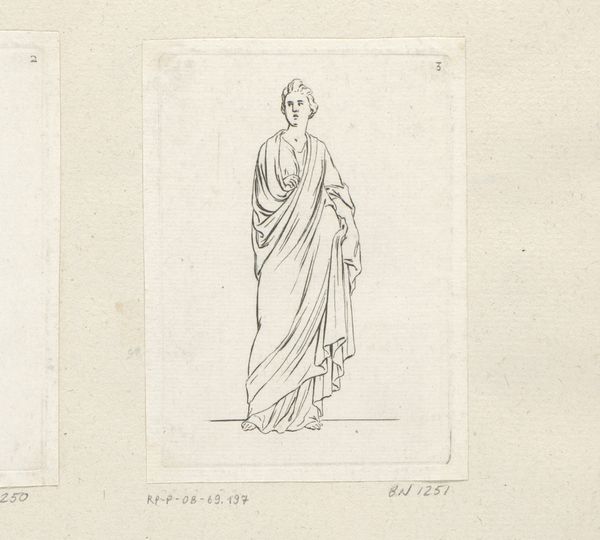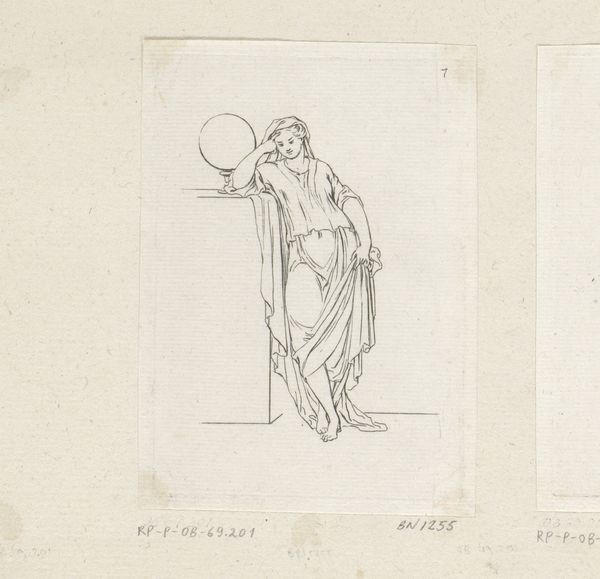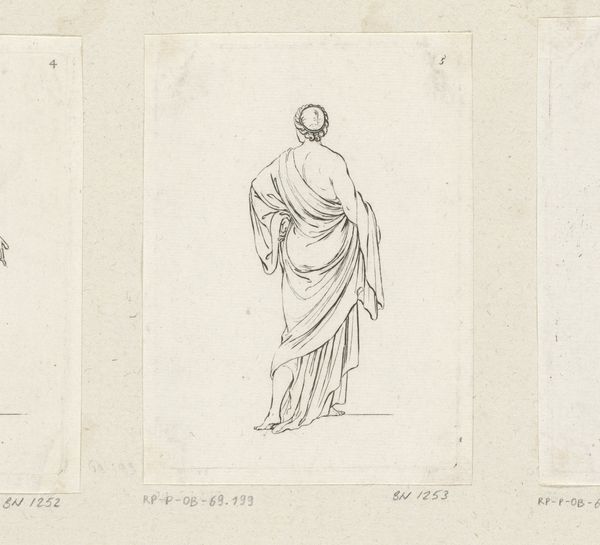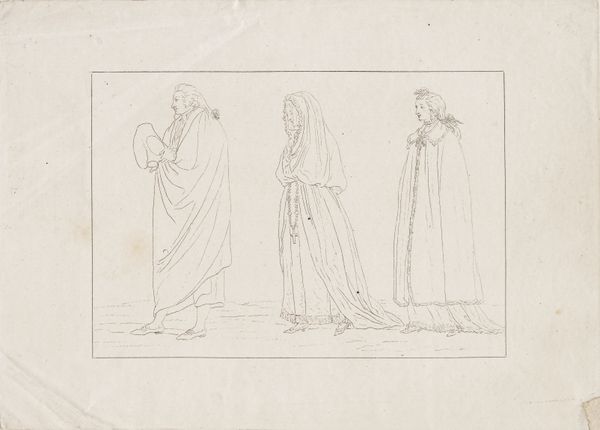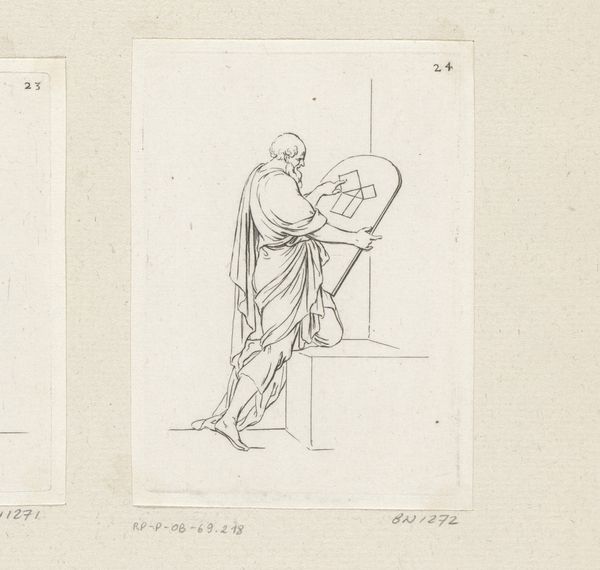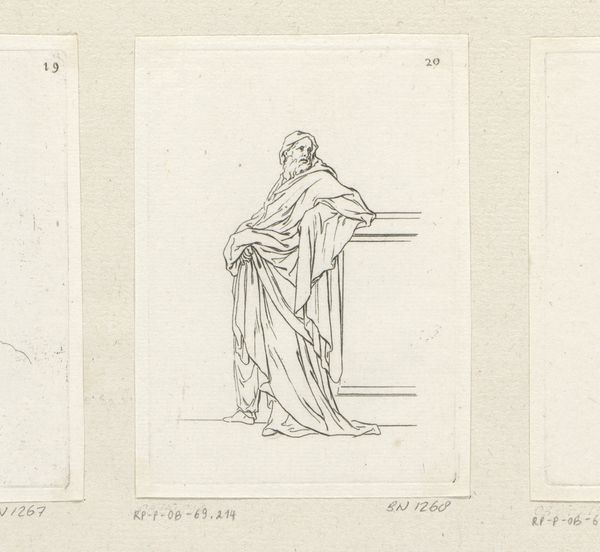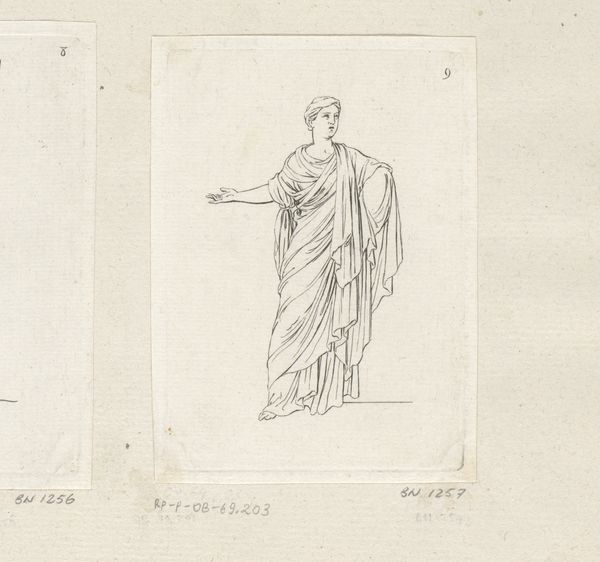
drawing, paper, ink, engraving
#
portrait
#
drawing
#
baroque
#
figuration
#
paper
#
ink
#
line
#
engraving
Dimensions: height 105 mm, width 75 mm
Copyright: Rijks Museum: Open Domain
Curator: I'm immediately drawn to the somber tone of this work; there's an undeniable austerity in its lines. Editor: Here in the Rijksmuseum, we have before us a drawing entitled “Man met bijl,” or “Man with Axe,” created in 1706 by Sébastien Leclerc I. It’s executed in ink on paper, using an engraving technique, showcasing the artist’s mastery of line. Curator: Indeed. The axe isn't just a tool; it's a potent symbol. Think of the executioner, the woodsman, the rebel—each evoking power, violence, labor. His gaze holds no remorse, yet isn't aggressive either. He’s an ambiguous figure embodying, perhaps, inevitable societal forces at play. What cultural narratives can be ascribed? Editor: Absolutely, consider that the axe has long been a double-edged symbol: it can represent strength, as in emblems of state like the fasces, but equally symbolizes revolution, think of those popularized during the French Revolution not far in time after this etching. Look at how Leclerc renders the figure, with a stark linearity in his posture, almost echoing classical drapery and stoic philosophers... Curator: Ah, yes! But doesn’t this very classical reference contribute further complexity? Here’s an almost androgynous figure draped like a Roman, and Leclerc appears conscious of creating gender ambiguity. Can we understand him as embodying various modes of masculinities coexisting – a subversion or deconstruction, maybe, for his own time? Editor: It could well be. In some symbolic traditions, an axe relates to purification through sacrifice; so his steady look could reference fortitude…a dedication to truth. Also, axes represented authority in some contexts; are we meant to read that in his determined stride? The minimal details allow endless readings! Curator: I'd love to examine how Leclerc’s contemporaries reacted. I wonder how audiences grappled with this enigmatic figure and its various resonances. Editor: A fine piece that invites a multitude of interpretive threads across centuries and symbolic landscapes, wouldn't you say?
Comments
No comments
Be the first to comment and join the conversation on the ultimate creative platform.
